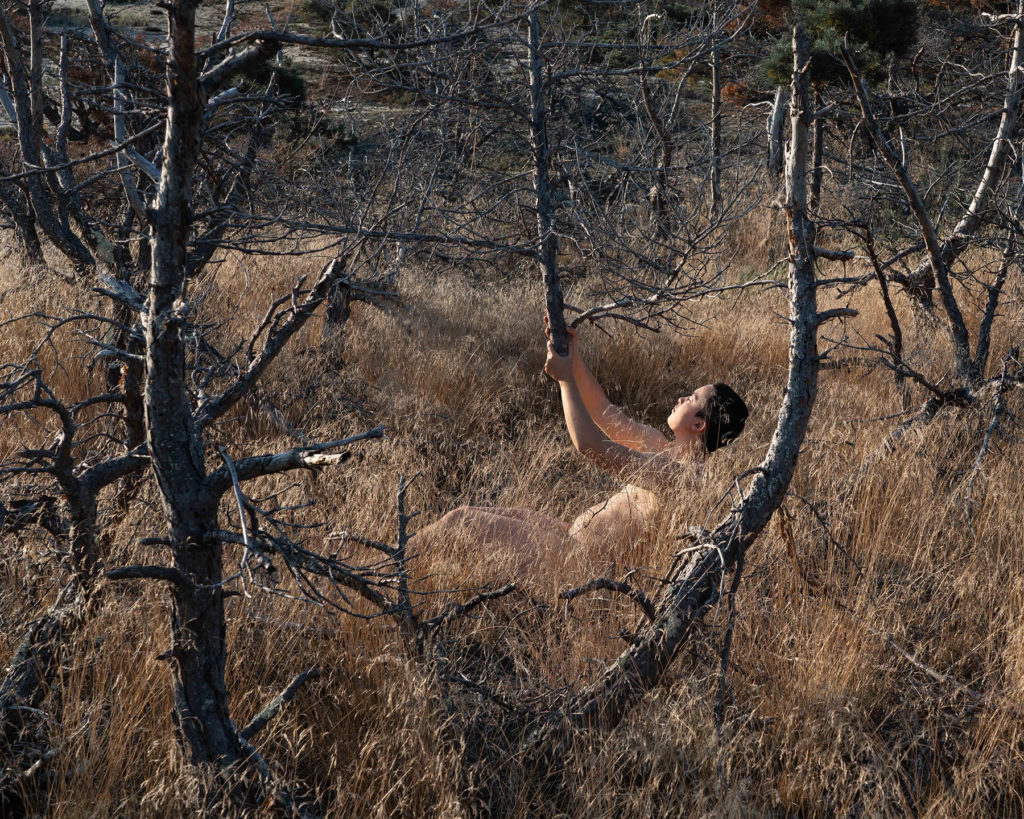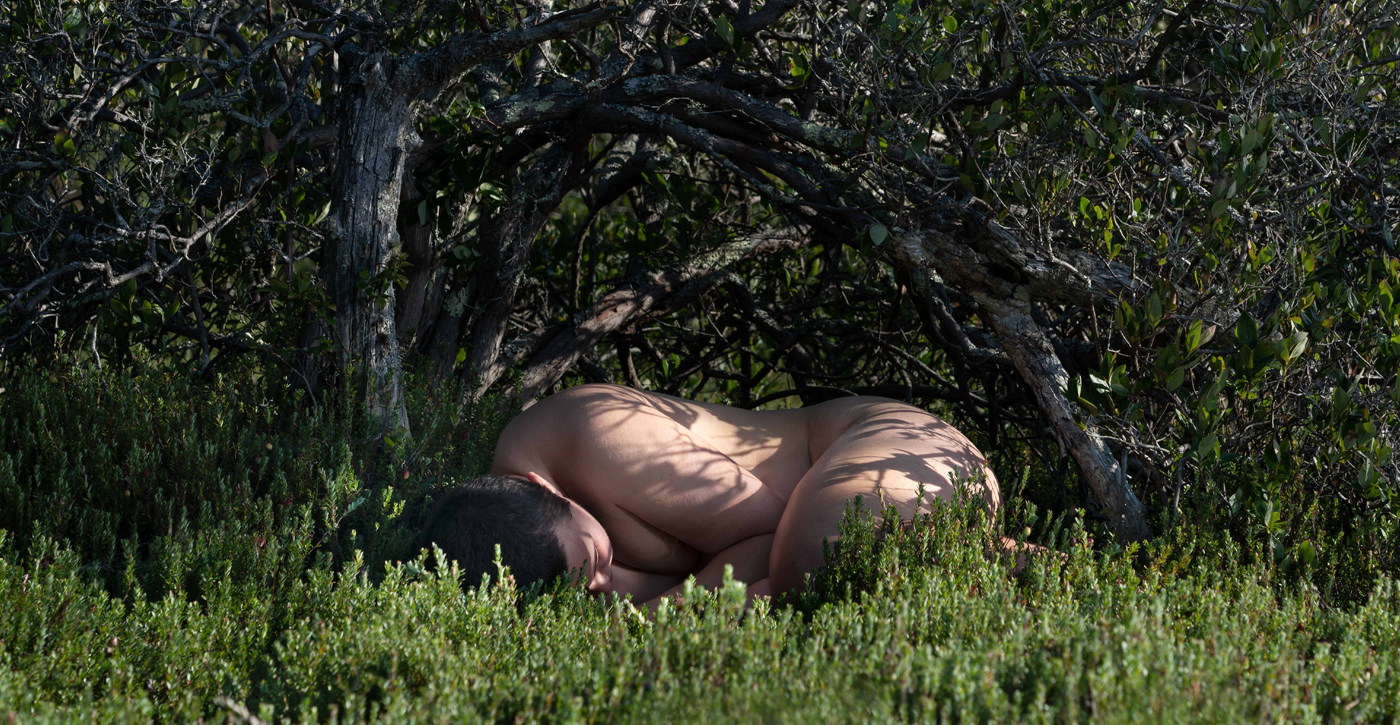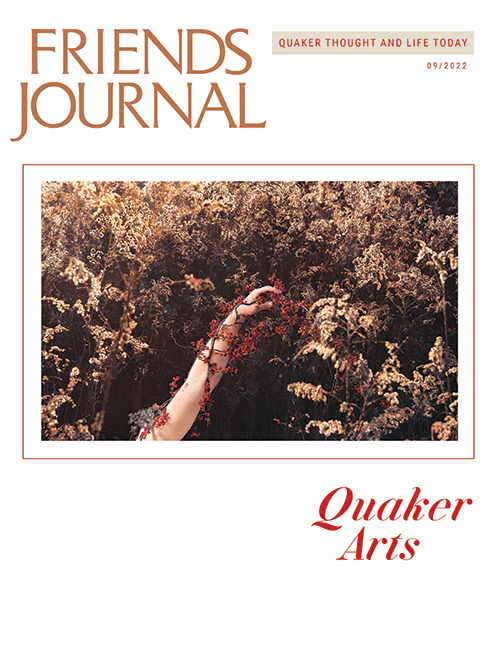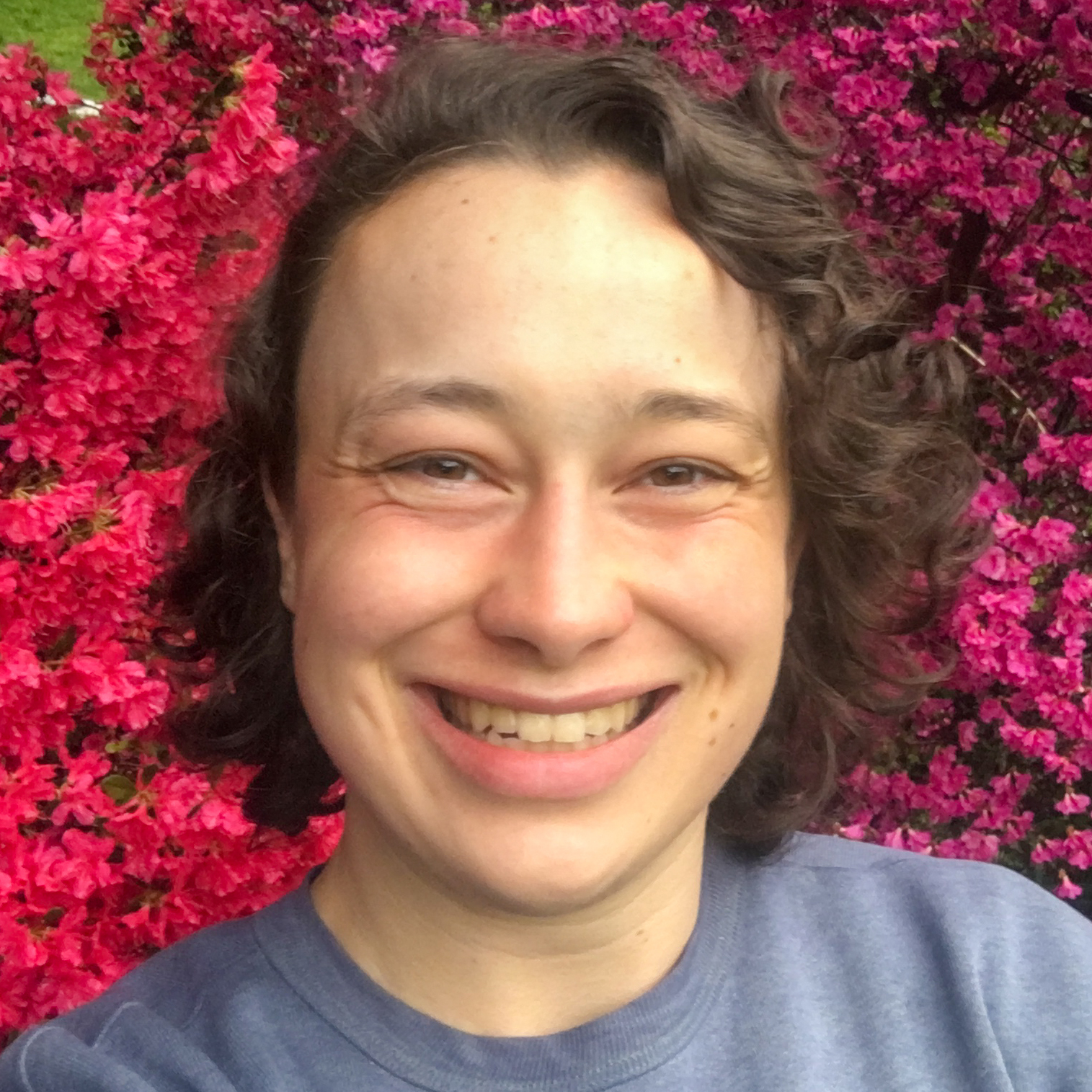Last summer I found ecstatic dance, and I immediately felt at home. Externally, ecstatic dancing is nearly the opposite of Quaker meeting: music, freeform dancing, cuddles, Spirit-led movement, physical contact; perhaps even being leapt over, lifted, and spun around. And yet I felt similarly inside to how I feel in Quaker worship. In both, an inner stillness comes over me, and I open to however Spirit is moving within me and the group as a whole. In events like Dance Sanctuary, I don’t feel like I have to quell inner nudges when Spirit is leading toward movement or when I think it’s possible for dancing to be ministry. In these spaces, I feel like I can pray with my whole body. I realized how much I long for a more physically embodied spiritual practice in Quaker spaces, and how much spiritually grounded movement can open me to deeper Quaker worship. Through dance, music, and art, I have become more settled in my body, more able to heal, and to live into where Spirit is leading my life.
My journeys as a lifelong Quaker, artist, and gender-diverse person are inextricably linked. My artistic practice immeasurably deepens my faith and understanding of my gender, and being trans helps me dig into spirituality, art, and truth further than I ever imagined. Without Quakerism or connections to Spirit, I likely wouldn’t have had the courage to create or share as vulnerably and openly with my gender journey or in my artistic practice.
And yet, I’ve often wondered if I am misunderstanding the guidelines of Quaker ancestors who stood so strongly against art and music in the lives of Quakers. Early Friends reacted against what they described as “empty forms”—including art, dance, and music—that they considered distractions from their relationship to and worship of God. Because the Church of England relied so heavily on music and arts as essential ways of worshiping God, it’s likely early Friends saw avoiding these as an important part of their new movement. Early Friends found that they could connect directly to Spirit even without these forms. Interestingly, later generations of Quakers took these practices of early Friends to mean that there should be no music or art anywhere in Quaker life, and seemed to think that these forms are always empty and cannot connect us to God. This complete denial of art became an empty form itself, such that Quakers of the time weren’t even open to the possibility that Spirit may communicate through music, dance, or art. Many modern Quakers are experimenting with and growing into the possibilities that these forms can be Spirit-led and Spirit-filled, accepting that Spirit may move within us in myriad ways.
Through various forms of seeking, I have experienced times in which art pulled me away or brought me closer to the Divine. Rather than avoiding art altogether because it might become an empty form or distraction from Spirit, I’ve practiced and grown in my listening to what is Spirit-led and recognizing what is deeply rooted in Spirit. As we consider the role of the arts in our Quaker faith and practice and in the lives of Friends, several queries rise for me: What are we missing when we only worship together in one way? If we sometimes collectively shared physically embodied spiritual practice in our Quaker communities, what connections would that possibly bring? How might a meeting for worship with attention to art or to dance on a Thursday deepen our communal experience of waiting worship on a Sunday?
My journeys as a lifelong Quaker, artist, and gender-diverse person are inextricably linked.
Several people have recently been intrigued by the close, physical connection I sense with Spirit on a daily basis. Some people have even wondered how this is possible when there are many others, who are much more practiced in spirituality than I am, who do not sense Spirit’s guidance daily. I don’t have concrete answers to this, but I have recognized some interwoven practices from my artistic and gender-diverse explorations that aided me in opening to Spirit’s guidance. Having an identity which society is set against, and living in a body with parts that sometimes felt wrong, I had to dig deeply to find my true self, because it didn’t fit into what most people considered normal. I was at odds with some of my body for many years, but through Spirit-led art, self-portraits, and dance, I was able to finally make peace and feel Spirit moving through my whole self in ways that waiting worship didn’t quite reach.
Being trans is thought by many to be going against God’s will, so I particularly had to explore my relationship with God. I was fortunate to grow up in Quakerism, so I knew from the beginning that God loved me. I was, however, told the opposite fairly often by society. I had to dig past shallow wells of love and figure out the deeper pieces of God’s love for me. I didn’t have many models back then, so this was a long, arduous process, but my artistic practice helped guide the way and fuel new understandings.
Through research for a photo series I was creating, I found that many cultures around the world have connections between gender-diverse people and spirituality. I knew it wasn’t for me to adopt the exact stories and beliefs from cultures not my own, but the knowledge of these stories helped me explore connections of gender and spirituality further in my own life. I became more empowered as I and others around me recognized and nourished spiritual gifts for bridging gaps, translation, and catalyzing change.

Cai Quirk, bringing life, 20″ x 24″, photograph.
I started making self-portraits in nature to create visual stories related to these connections and bring together gender diversity, spirituality, mythology, and storytelling. The process of creating each image was rooted in Quaker worship and physical spiritual embodiment. As I went out into nature to find places to create these images, an internal sense of direction began to develop, like a divine compass that I could feel physically in my chest. The needle led me around the forest or dunes, turning one way and then another, sometimes in circles, until I found the place where creating a photo felt right. I wouldn’t have found many of these places without heeding the internal nudges. I remained in a state of worship and prayer, following with my whole body rather than allowing messages to come only through words. The photos became collaborations between Spirit, nature, and me, each of us manifestations of a divine oneness. I realized later that this was practice for listening to God in daily decisions as well: having little emotional stake in what direction I turned in the forest prepared me for trusting what direction I was led to turn in life.
Though I didn’t know it at the time, the exercise of listening to the Spirit where less was at stake helped me fine-tune my sense of divine guidance in more complex decisions. As a result, I became more Spirit-led in daily life. Learning from various Quakers about how they experience listening to Spirit and testing my own experiences with others aided this growth and became interwoven with my discernment around art and gender.
I now see these years of practice as preparing the soil for seeds. Sitting in Quaker meeting can be like being the ground where sun shines and rain falls, but if one’s soil is packed so tightly that nothing can get in, then no seeds can grow. Inviting Spirit to directly guide me in something tangible and low-pressure helped aerate the soil so that the seeds, rain, and sun that were already present in worship could get into my soil better. Sprouts began to grow and flourish, and I began to have more mystical experiences and guidance from the Divine. Around this time, my experiences in Quaker worship shifted. Out in nature, I could truly follow wherever Spirit led, even if that was through movement or nonverbal vocalizations.
Early Quakers understood that Spirit might move through one’s whole body in ways other than quiet feelings and words, and indeed this quaking is where our name came from. In many modern Quaker meetings, however, these would not be welcome or seen as Spirit-led, nor would the content of some vocal messages I was called to give, and so I closed down a bit. I was still somewhat grounded in worship, but I didn’t feel like I could fully be present with God because I wasn’t sure if I was ready to disrupt certain Quaker conventions, even if that was where God was leading. I was already following Spirit in disrupting other social beliefs with my art.
I began to worry that perhaps these conflicted feelings were some of the problems that come from following Spirit through artistic means. On the other hand, neither Quaker worship nor my artistic practice felt like empty forms, while some of the unspoken conventions restricting some kinds of ministry in unprogrammed Quaker meetings did feel like empty forms, even though they were forms that worked for some people. I sat with these questions rather than trying to find quick solutions, and continued to grow and explore.
During the first year of the pandemic, when there were many online meetings for worship available, I experimented with joining extra worship sessions while I was going about daily life. In many, I sat still like I have for most of my life, but in others I had deep worshipful experiences while taking photographs; doing the dishes; or drawing, running, or playing music. I know that any moment of the day can be worship, but these communal moments brought me to a different space from when I tried alone. My mind and body react in certain ways to corporate worship from years of practice, and these experiments were profound and transformative.
The Quaker meeting I attended in college had hymn singing before meeting, a collective embodied experience that got our spiritual blood going in a communal way. I now better understand why some Quaker meetings were influenced by Methodist revivals over a century ago and became programmed: there can be great power in ways of worship that invite us to pray with our whole bodies, yet I am not advocating that unprogrammed meetings make that strong of a shift in waiting worship. A weekly hour of corporate, unprogrammed worship has been a profound grounding force in my life and in the lives of many others. Still, I wonder how our meetings would grow and deepen if we explored other ways to worship together in addition to a weekly unprogrammed meeting.
What might be born in the rich depths of an hour of unprogrammed worship if we collectively spiritually stretched in other ways as a community? Because of online worship, I was able to experiment without disrupting others, but I’ve wondered what it would be like to collectively share an online experience of meeting for worship with attention to dishes—an evening with everyone doing dishes and worshiping together. Some communities have tried a weekly weekday Experiments in Faithfulness program in which someone leads the group in a different form of worship or spiritually grounded practice, and others have tried adding a spiritual movement session before every Sunday worship for a month with an intent to consider continuing. Some meetings already have regular hymn singing and healing circles during the week or before meeting, and welcome drawing or wiggling in worship.
Worship and inner stillness are experienced differently by different people. Some people find inner stillness through outward movement and find deep resonance in Quaker worship, even if they can’t sit completely still for an hour. Who do we privilege when movement is implicitly forbidden in worship? Do we worry we might not understand the ministry of dancing or a message without words, and so seek to quell it? Do we fear that practices which are different from what we’re used to might become distractions or empty forms so that we don’t try them in the first place? Are we concerned that meetings might feel like a chaotic, unhindered mess, or can we trust and nourish people in continuing to listen to Spirit’s guidance through ministry meant for the group?
I am not suggesting a grab bag of a hundred spiritual techniques, but how might trying some communal, embodied spiritual practices help nourish our collective growth? Who might feel better able to bring their full selves to our Quaker communities? I would, and many Quakers I know would, too, especially Friends who are young adults, LGBTQ+, and BIPOC. We don’t desire to try these things out of disrespect or ignorance of the meaning of worship; many of us have been raised as Quakers or have been around for a while in this religion that invites us to follow where Spirit is leading, and many of us feel Spirit leading us to worship in more ways than one. For some of us, these aren’t just individual experiments anymore but a regular part of our collective spiritual practice, as well as ministry that Spirit is leading us to take into the world.
May we give ourselves the opportunity to become more vibrant communities where Spirit flows freely. May we be faithful.
Quaker meeting is not just a place to come and be spiritually rejuvenated once a week so we can get through until the next meeting. It is a place where we collectively listen to divine guidance and help each other grow in our faithfulness to this guidance. Early Quakers witnessed against societal injustices and were socially disruptive when it was necessary to stand up for what they believed in. Many of the artists among modern Quakers are creating Spirit-led art that is specifically aimed at creating social change. Others are creating spaces for personal healing, change, and growth, or following the leadings of Spirit to make art even when the outcomes aren’t clear.
We are following in the footsteps of our ancestors, even if those ancestors used different means. Early Quakers were very specific about not closing off from the world in hermitages and cloisters. Instead they brought what many non-Quakers still see as a unique blend of inner listening and outward, faithful action to the world. If we ignore the possibility that faithful action may come in the form of transformative art, we limit the ways Spirit can move in our communities and beyond. If we believe that art is only important and Spirit-led if it is socially transformative, we miss the possibilities of personal and communal growth, healing, and connection that art, music, and dance can bring.
May we in our communities open to broader possibilities of where Spirit may lead us. May we be open to trying new ways of worship. May we know that some experiments will fail or not fit at the time, even as others flourish. May we trust ourselves and each other to discern what is bringing us closer to Spirit. May we give ourselves the opportunity to become more vibrant communities where Spirit flows freely. May we be faithful.





Many years ago I danced in the middle of Quaker Meeting. It was lovely.